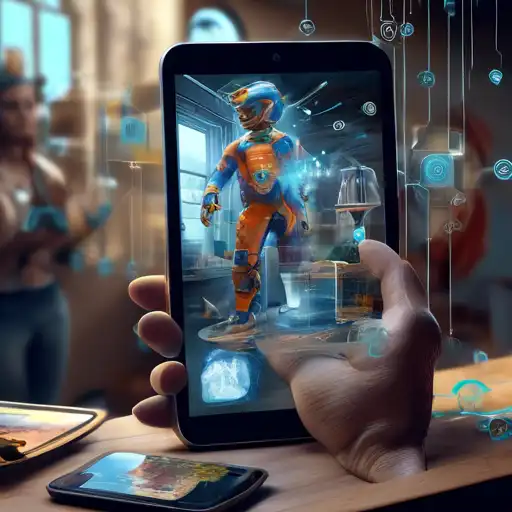Understanding Augmented Reality
Augmented Reality (AR) is a transformative technology that overlays digital information onto the physical world, enhancing our perception of reality. Unlike Virtual Reality (VR), which creates a completely artificial environment, AR uses the existing environment and adds digital elements to it. This blend of digital and physical worlds opens up endless possibilities for interactive experiences.
How Augmented Reality Works
AR technology integrates digital content with the user's environment in real time. It uses devices such as smartphones, tablets, or AR glasses to display digital images and information. Through advanced algorithms and sensors, AR devices can accurately place digital objects in the physical world, making them appear as if they are part of the real environment.
The Applications of Augmented Reality
AR is revolutionizing various industries by providing innovative solutions to traditional problems. Here are some key applications:
- Retail: AR allows customers to visualize products in their own space before making a purchase, enhancing the shopping experience.
- Education: Interactive AR applications make learning more engaging by bringing educational content to life.
- Healthcare: AR assists in complex surgeries by providing surgeons with real-time, 3D visualizations of the patient's anatomy.
- Gaming: Games like Pokémon GO have popularized AR, offering immersive gaming experiences that blend the virtual and real worlds.
The Future of Augmented Reality
The potential of AR is vast, with continuous advancements in technology paving the way for more sophisticated applications. Future developments may include more seamless integration of AR in everyday life, such as in navigation, where AR could provide real-time directions overlaid on the real world. The integration of AR with other technologies like AI and IoT could further enhance its capabilities, making it an indispensable part of our digital future.
Challenges and Considerations
Despite its potential, AR faces several challenges, including privacy concerns, the need for high-quality content, and the requirement for powerful hardware. Addressing these issues is crucial for the widespread adoption of AR technology.
Augmented Reality is not just a technological innovation; it's a new way of interacting with the world around us. By blending digital information with the physical environment, AR enhances our reality, offering endless possibilities for innovation and interaction. As technology continues to evolve, the line between the digital and physical worlds will become increasingly blurred, making AR an integral part of our daily lives.
